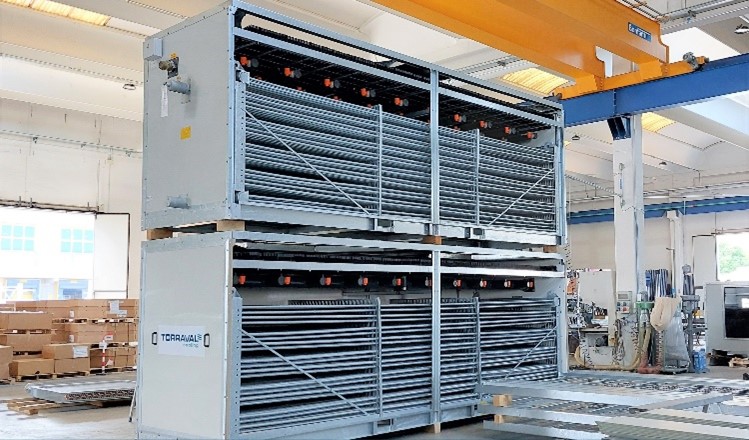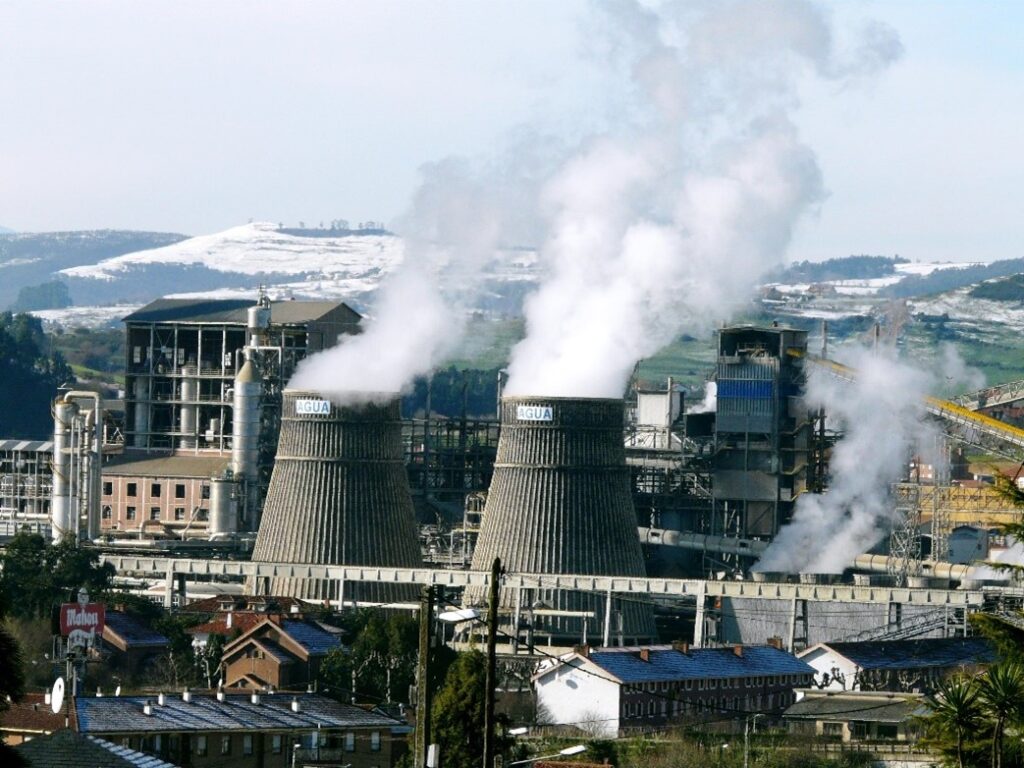There are different types of cooling towers. Each type is versatile and applicable to various industries. Considering factors such as the process, water quality, climate, geographic location, and other circumstances, there is a type of tower suitable to meet the specific needs of each customer.
General speaking, cooling towers are divided into two main categories based on the applied heat transfer mechanism: evaporation.
Evaporative and Non-evaporative Cooling Towers
When hot water enters the cooling tower, it spreads evenly across the entire surface of the fill. Simultaneously, a fan propels air upward through the fill, breaking down the water into tiny droplets that release their heat into the air.
This evaporation process lowers the temperature of the water mass, which falls into the tower basin at a lower temperature than initially. This type of tower is recognized for its simplicity and effectiveness in operation and stands out as the most common option.In the second type of towers, the non-evaporative ones, the evaporation process does not take place. Cooling occurs through a different mechanism.

Another criterion for classifying cooling towers and other cooling solutions is based on the contact between water and air:
Open Circuit Solutions
Open Circuit Towers
In open circuit cooling towers, water is in direct contact with the air, transferring its heat.
In this type of towers, the greater the contact surface between water and air, the higher the evaporation is, and consequently, the higher the cooling capacity of a tower. In fact, the direct contact that occurs in the fill is the core element of a cooling tower. Therefore, maintaining the fill in good condition is crucial to optimizing the cooling capacity of any tower.
Closed Circuit Solutions
Closed cooling towers
This type of towers has a coil in their center, through which water or any other fluid, such as oil or ammonia, circulates. At the same time, on the outside of the coil, water wets the tubes, and the air takes away heat, thus cooling the fluid circulating inside the coil.

Evaporative condensers
this solution differs in the evaporation process. Instead of hot liquid entering and exiting at a lower temperature, vapor enters, condenses in the coil, and exits in liquid or fluid form. An alternative that resembles a closed circuit is the integration of open evaporative towers combined with a heat exchanger. Since heat exchangers are known for their heat transmission efficiency and higher economic performance, this solution is widely used in the industry.
Another criterion for classifying cooling towers is based on the air draft or airflow:
Natural Draft Cooling Towers
This type of cooling tower is traditionally used in thermal and nuclear power plants where operational reliability must be maximum.
Natural draft cooling towers are large concrete constructions with a tall chimney that causes air movement due to density differences, so there is no energy consumption as such. These towers are safe, with zero energy consumption, and are generally used for cooling large water flows. A characteristic feature of this type of tower is its enormous plume of steam, often mistaken for toxic gases and pollution.
Due to their high cost and size, this is not a suitable application for all industries.

Mechanical Draft Cooling Towers
Induced Draft Cooling Tower
Induced draft cooling towers have fans located at the top of the tower that extract or pull in air. The fans are driven by mechanical systems, including reducers, transmission shafts, and an electric motor.Certainly, here’s the rewritten code:“`htmlForced Draft Cooling Tower
Forced draft cooling towers, similar to induced draft ones, operate with a fan. The difference lies in the fan’s placement at the bottom of the tower, pushing air outward through the top.
These mechanical draft towers leverage the motorized fans for efficient airflow through the tower, contributing to the cooling process. The distinction between induced and forced draft lies in the direction of the airflow created by the fan—either drawn in from the top (induced) or pushed out from the bottom (forced).

Adiabatic towers
Hybrid Cooling Towers
Hybrid cooling towers combine the technology of air-cooled towers using heat exchangers and evaporative cooling.
There must be well-founded reasons to consider the implementation of a hybrid tower, and its use is advisable only in specific situations, such as in cases of extremly high temperatures with intermittent variations.
We provide cooling solutions for process industry, HVAC, industrial refrigeration, and commercial refrigeration.